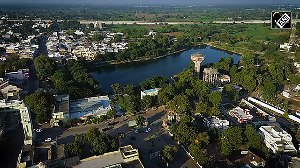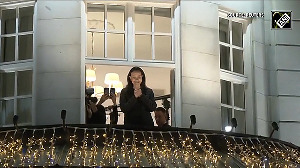Looking at the history of women representation in Lok Sabha, the percentage remained about 5 till the 1970s and it was only in 2009 that it could reach a double-digit figure.

Women's representation in Rajya Sabha has been slightly lower than in Lok Sabha, not yet crossing 13 per cent of the total membership of the house since 1951.
The Constitution (One Hundred and Twenty Eighth Amendment) Bill, 2023, was listed for introduction in the Lower House through a supplementary list of business. The bill will be the first to be introduced in the new Parliament building during the ongoing special Parliament session.
The government said the women's reservation bill is aimed at enabling greater participation of women in policy-making at state and national levels.
The statement of purpose of the bill said the role of women is extremely important for achieving the goal of India becoming a developed country by 2047.
The highest proportion of women representatives elected to Lok Sabha so far was in the 2019 elections, but it was nearly 15 per cent of total membership while the highest proportion of women representatives to Rajya Sabha stood at 12.7 per cent in 2014.
In Lok Sabha in 1951, the representation of women stood at 5 per cent which remained same in 1957.
The percentage increased to 6 per cent in 1962, 1967 and it was recorded at 5 per cent in 1971, 4 per cent in 1977, 5 per cent in 1980, 8 per cent in 1984, 6 per cent in 1989, 7 per cent in 1991, 7 per cent in 1996, 8 per cent in 1998, 9 per cent in 1999, 8 per cent in 2004, 11 per cent in 2009 and 12 per cent in 2014.
While in Rajya Sabha, women representation stood at 6.9 per cent in 1952, 7.8 per cent in 1954, 8.6 per cent in 1956, 9.5 per cent in 1958, 10.2 per cent in 1960, 7.2 per cent in 1962, 8.9 per cent in 1964, 9.8 per cent in 1966, 9.6 per cent in 1968, 5.8 per cent in 1970, 7.4 per cent in 1972, 7.5 per cent in 1974, 10.1 per cent in 1976, 10.2 per cent in 1978.
Women's representation stood at 12 per cent in 1980, 10.1 per cent in 1982, 10.3 per cent in 1984, 11.5 per cent in 1986, 10.6 per cent in 1988, 10.3 per cent in 1990, 7.2 per cent in 1992, 8.3 per cent in 1994, 7.8 per cent in 1996, 7.7 per cent in 1998, 9 per cent in 2000, 10.2 per cent in 2002, 11.4 per cent in 2004, 10.2 per cent in 2006, 9.8 per cent in 2008, 11 per cent in 2010, 10.6 per cent in 2012, 12.7 per cent in 2014, 11 per cent in 2016, 11.4 per cent in 2018 and 10.2 per cent in 2020.
In state legislative assemblies or Vidhan Sabhas, meanwhile, average representation is even lower, mostly below 10 per cent.
The number of women candidates and MPs varies greatly across states and parties.
In the present 17th Lok Sabha, Uttar Pradesh and West Bengal have the highest numbers of women MPs, according to an analysis by think-tank Observer Research Foundation (ORF) of December, 2022.










